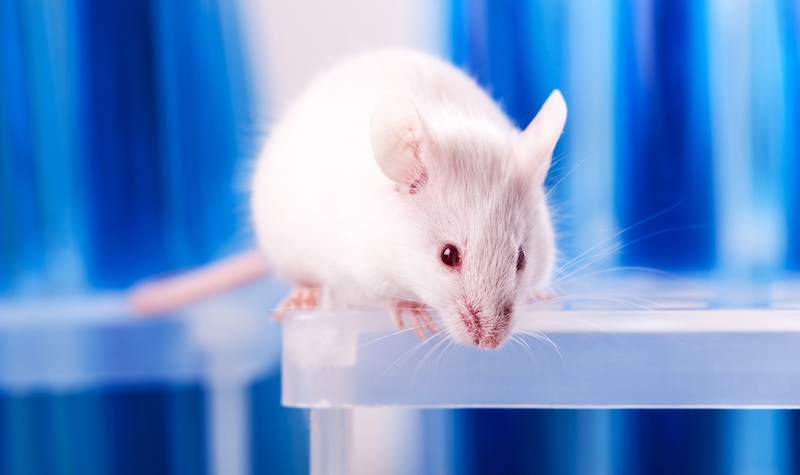How Are Animal And Human Research Participants Protected?

- A A A
Scholars discuss whether the Animal Welfare Human activity achieves its aim of protecting animal research subjects.
Biomedical and behavioral researchers use animals as research subjects to improve human health. For example, physicians used cats and dogs to develop the medical technology that would eventually make open heart surgery possible. Today, scientists developing coronavirus vaccines showtime tested on animals before moving to human subjects.
In the U.s., the Brute Welfare Deed (AWA) is the master regulatory instrument to protect animal research subjects. The AWA protects warm-blooded animals used in research, commercial sale, public exhibition, or commercial transport. The law contains standards for the treatment of animals in research and requires institutional oversight of all animal subjects research. The U.S. Department of Agronomics enforces the AWA through routine inspections of research facilities.
Scholars differ on whether the AWA does enough to protect animal welfare. Some organizations oppose using any form of animal research, but others maintain that animal research is necessary for the connected improvement of medical techniques and treatments.
This calendar week'south Saturday Seminar focuses on the AWA and protections for the utilize of animals as test subjects in scientific research.
- In an article published in Mitchell Hamline Law Review, Jane Kotzmann of Deakin University and Nick Pendergrast of The University of Melbourne explicate that animal activism exists on a spectrum between 2 main ideologies: fauna welfare theory and animal rights theory. Animate being welfare theory focuses on limiting the harm done to animals when used to do good humans. Animal rights theory argues that animals are entitled to certain cardinal rights that protect them from human use. According to Kotzmann and Pendergrast, animal welfare theory, which frames the AWA, has failed to foreclose or slow exploitation of and cruelty toward animals. Instead, they debate that creating a legal framework based on animal rights theory will provide a more effective protection scheme.
- In a Hastings Law Journal article, Justin Marceau of the University of Denver Sturm College of Police claims that the AWA has "caused more harm than good." Marceau claims that the construction of the AWA—which simply applies to warm-blooded animals—acts as a conceptual bulwark to animal protection past confirming the belief that "non all animals count as animals." Marceau also argues that opponents of animal protection utilise the AWA to forbid additional regulation of animal welfare. For instance, opponents of animal protection often invoke the AWA "to justify deference" to AWA-licensed businesses regardless of whether their practices actually preserve beast welfare.
- In an article published in the Nebraska Law Review, McGeorge School of Law's Courtney G. Lee argues that the AWA does not adequately protect animals used in laboratory testing. In 2002, she explains, Congress excluded sure species from AWA protection—including rats and mice, which brand upwardly almost 95 per centum of laboratory tests involving animals. Although Lee acknowledges the medical benefits of animal testing, she suggests that the AWA needs updating to provide more humane treatment for the animals used in these studies. She proposes broadening the definition of "animate being" to cover more species capable of feeling pain, requiring researchers to consider alternatives to fauna testing, and encouraging facilities to rehome animals rather than kill them after testing.
- Although strong ethical guidelines embrace homo test subjects, no comparable guidelines protect animals used in research, co-ordinate to Hope Ferdowsian and her coauthors in a recent article. They explain that the AWA was originally passed to prevent researchers from illegally obtaining dogs and cats for research but advise that the law falls short in its protections of other animals used in research. Ferdowsian and her coauthors debate that moral distinctions betwixt the treatment of animal and human test subjects are arbitrary, and then the stricter ethical guidelines that utilize to human subjects should also apply to animals. Some of the guidelines they recommend extending include: banning the use of "punishment, coercion, restraint, or confinement" on animals; requiring the expected benefits of the research to outweigh the risk of harm to animals; and guaranteeing that the chance of damage to animals is near nonexistent.
- Proposals to reform the AWA typically fall into two schools of thought, Harvard Police force School's Jessica Eisen writes in a University of Michigan Journal of Police Reform article. Eisen notes that proponents of the animal welfare theory debate that animals should be treated in ways that reduce their suffering. On the other hand, followers of the animal rights theory think that animals have inalienable rights and promote treatment of animals that respects those rights. To advance animate being protections, however, Eisen argues that public discourse should instead focus on a new perspective, which she calls "evolving ethic." Co-ordinate to Eisen, this perspective considers other aspects of animal legal protection—such as storytelling of animals' experiences—and provides a better framework to regulate animal experimentation.
- In a North Carolina Law Review article, Mayo Clinic's Karen M. Meagher and Michigan Country Academy'due south Paul B. Thompson detail the regulatory history of biotechnology inquiry involving beast subjects. Noting the importance of hog farming in North Carolina, they then discuss how genetic bioengineering will confront legal and social challenges—such equally environmental justice and nutrient ethics bug—within the country in the futurity. Borrowing from the lessons learned from genetically engineered mosquitoes, Meagher and Thompson suggest means that farmers incorporating genetically bioengineered hogs can navigate Due north Carolina's farming policies and animal protection legislation.
The Saturday Seminar is a weekly feature that aims to put into written form the kind of content that would be conveyed in a live seminar involving regulatory experts. Each calendar week,The Regulatory Review publishes a brief overview of a selected regulatory topic and then distills recent research and scholarly writing on that topic.
Related Essays
Source: https://www.theregreview.org/2020/10/10/saturday-seminar-regulation-animal-subjects-research/#:~:text=In%20the%20United%20States%2C%20the,public%20exhibition%2C%20or%20commercial%20transport.
Posted by: schmalzfrook1993.blogspot.com

0 Response to "How Are Animal And Human Research Participants Protected?"
Post a Comment